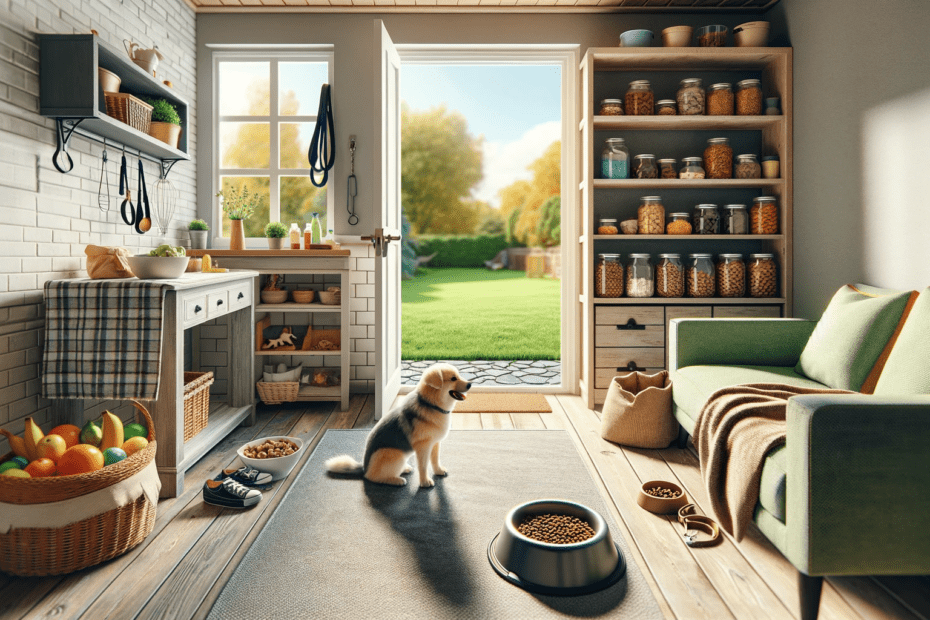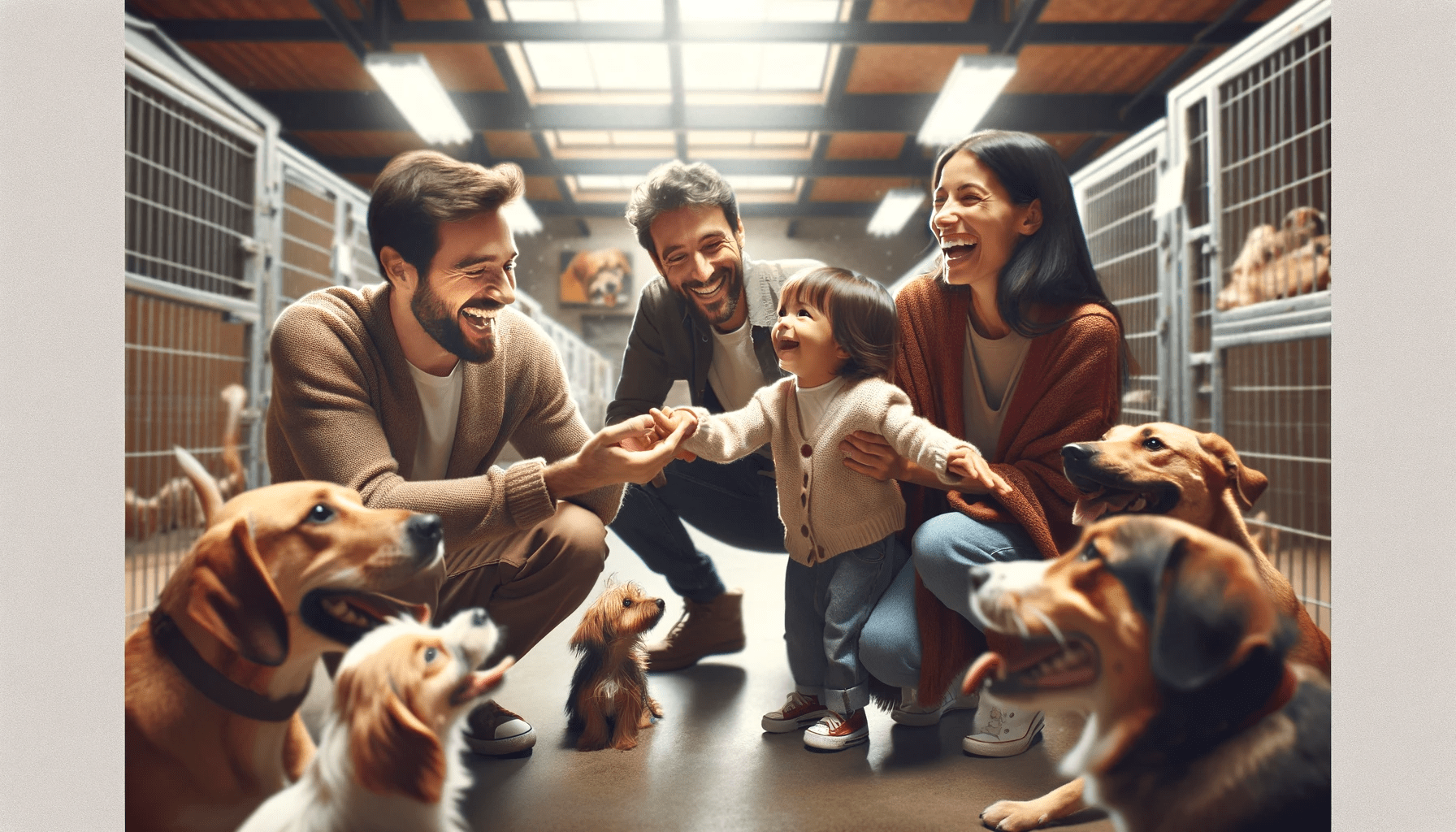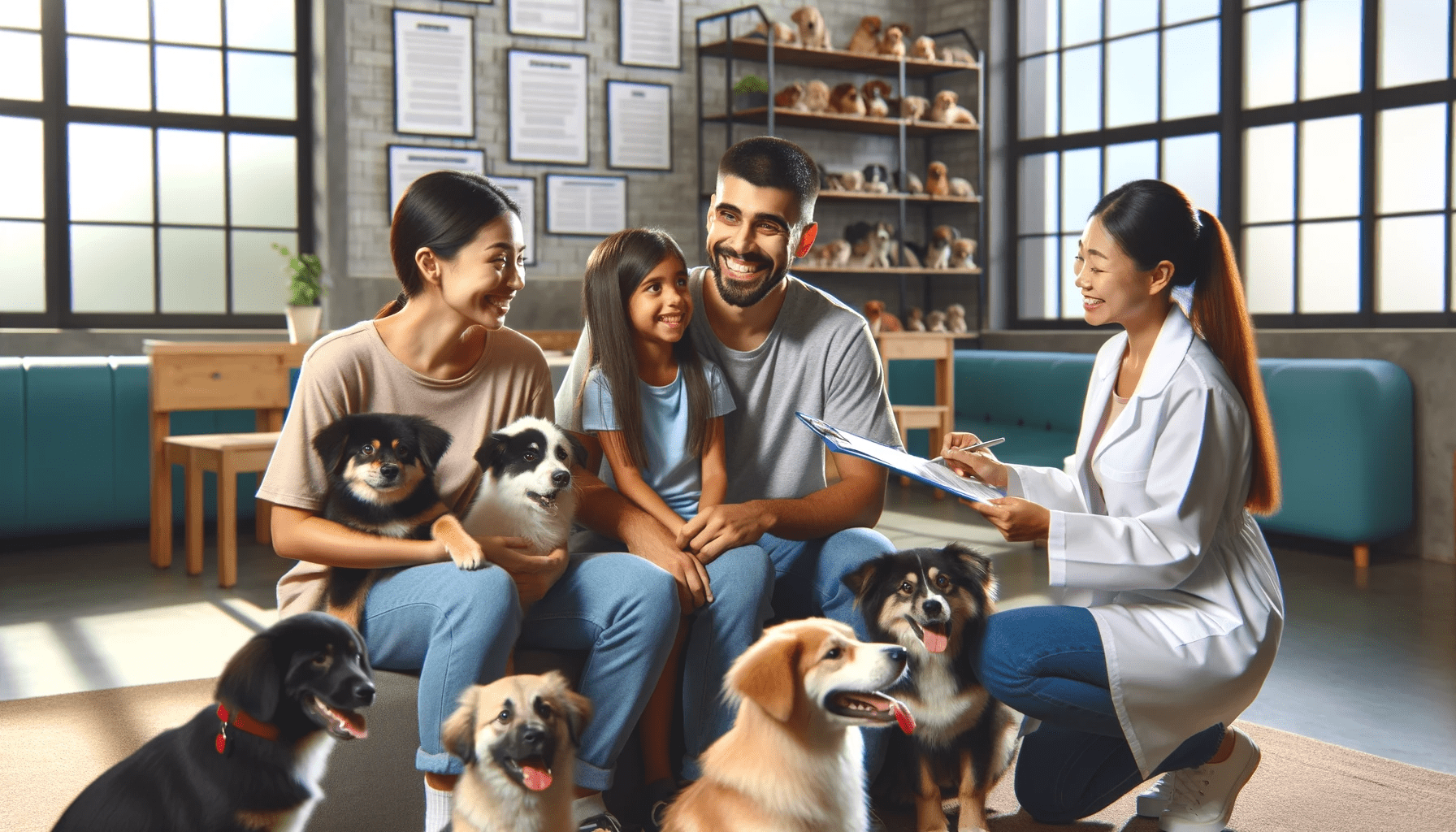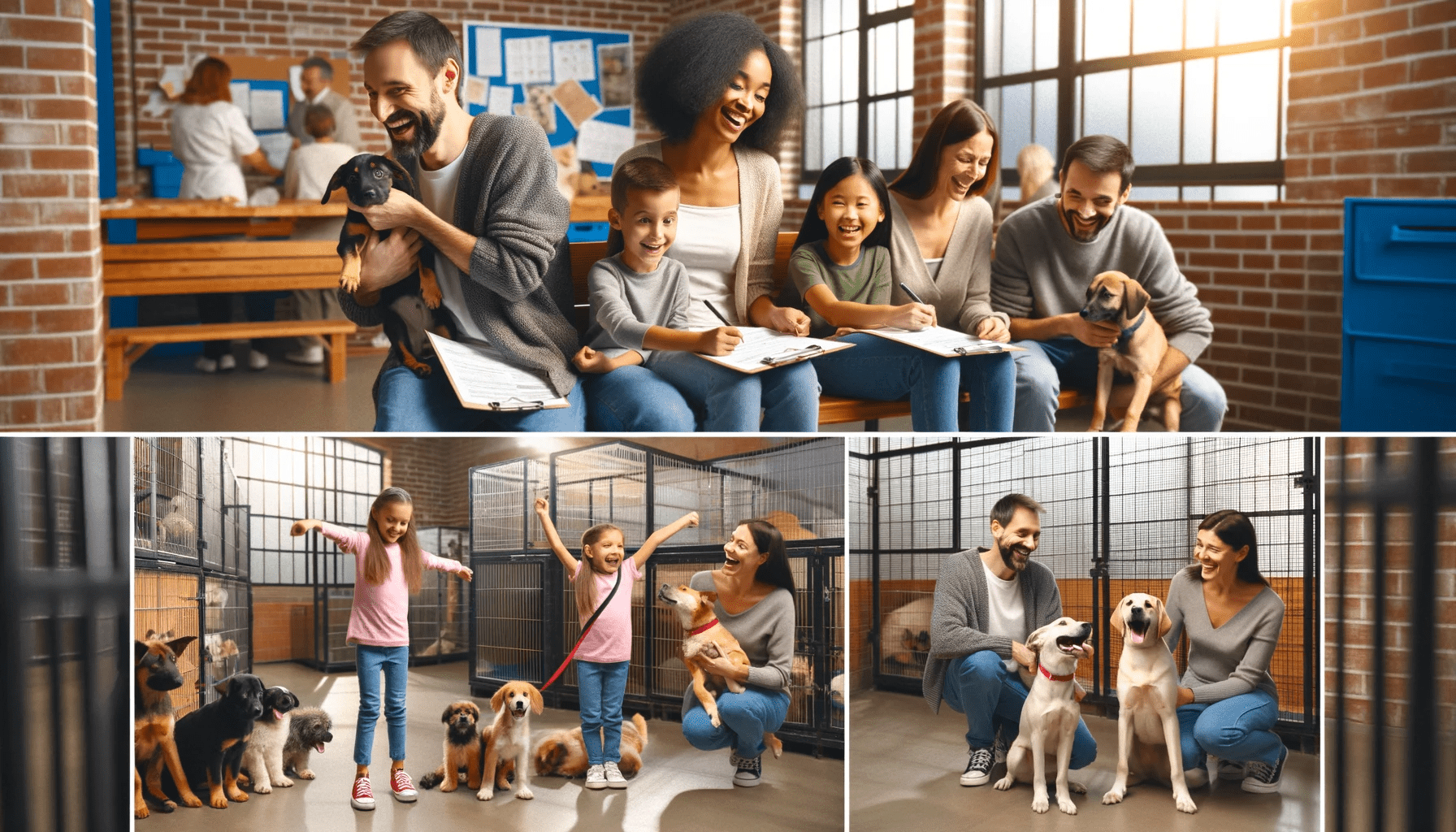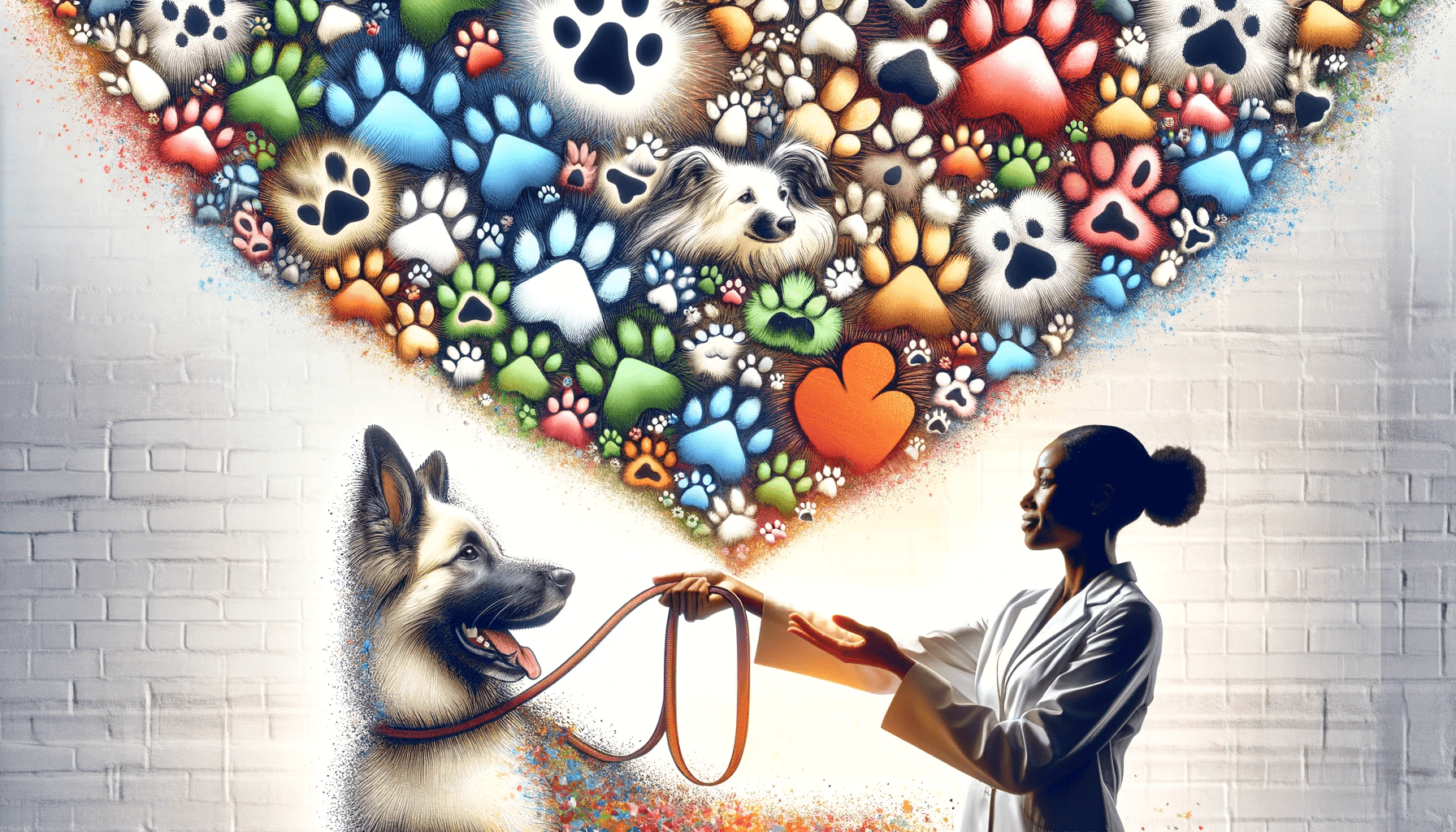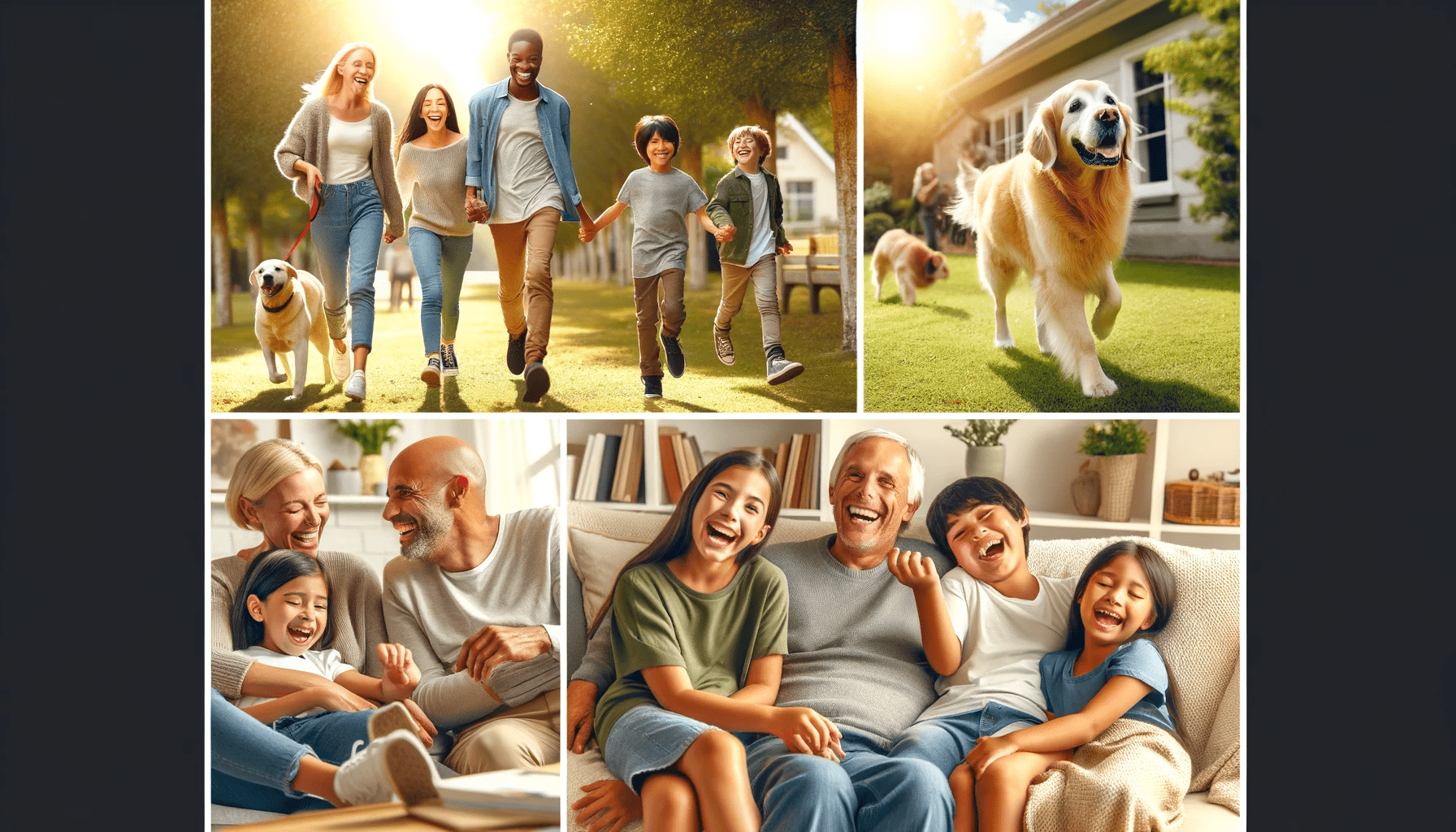Are you getting ready to bring a new furry friend into your home? Before you do, it's important to make sure you're fully prepared for the adventure ahead.
In this article, we'll provide you with the 7 best tips for new dog adoption preparation. From assessing your home's readiness to introducing family members and pets, we'll cover everything you need to know to ensure a smooth transition for both you and your new canine companion.
Let's get started!
Key Takeaways
- Assess your home for potential hazards and puppy-proof accordingly.
- Establish a routine and schedule for feeding, exercise, and potty training.
- Gather essential supplies and equipment for your new dog.
- Create a comfortable sleeping area for your dog with the right size bed and a quiet environment.
Assessing Your Home's Readiness
Before bringing a new dog into your home, assess if it's ready for a furry addition by ensuring that your living space is safe and suitable for a canine companion. Conducting a thorough home assessment is crucial in creating a harmonious and secure environment for your new pet.
Start by identifying potential hazards within your home. Remove any toxic plants, chemicals, or small objects that could be swallowed. Secure electrical cords and outlets to prevent chewing or accidents. Make sure your fences are sturdy and secure, providing a safe space for your dog to roam and play.
Consider the size and layout of your home. Is it spacious enough for your dog to move around comfortably? Dogs need room to explore and stretch their legs. Ensure that there are no tight spaces where your dog could get stuck or injured.
Evaluate the noise level in your home. Dogs are sensitive to loud noises, so if you live in a noisy area or have a busy household, it may not be the ideal environment for a dog. Additionally, check for any potential escape routes, such as open windows or unlocked doors, and address them accordingly.
Taking the time to assess your home environment will help you create a safe and suitable space for your new furry friend. By eliminating potential hazards and ensuring a peaceful atmosphere, you're setting the stage for a happy and healthy life together.
Establishing a Routine and Schedule
- First, establish a daily routine and schedule for your new dog to provide structure and stability in their life. Dogs thrive on consistency, and having a set routine will help them feel secure and know what to expect each day. Here are some tips for establishing a routine and schedule for your new furry friend:
- Establishing a feeding routine: Dogs should be fed at the same time each day to regulate their digestion and prevent overeating. Create a designated feeding area and serve their meals in a consistent manner. This will also help with house training, as you can anticipate when they'll need to go outside.
- Establishing an exercise routine: Dogs need regular exercise to maintain their physical and mental well-being. Determine the appropriate amount of exercise for your dog's breed and age, and establish a daily exercise routine. This can include walks, playtime, or interactive toys. Be sure to provide both mental and physical stimulation to keep your dog happy and healthy.
- Establishing a potty routine: House training is crucial for a new dog. Take your dog outside at consistent intervals throughout the day, such as after meals and naps, and reward them for going potty in the appropriate spot. Stick to this routine until your dog becomes familiar with it and learns to hold their bladder.
Puppy-Proofing Your Living Space
Before bringing a new puppy into your home, it's crucial to puppy-proof your living space to ensure their safety.
This involves taking essential safety measures and being aware of common household hazards.
Essential Safety Measures
To ensure the safety of your new puppy, take the necessary steps to puppy-proof your living space. Here are some essential safety measures you should consider:
- Safety Training: It's crucial to provide your puppy with basic safety training. Teach them commands like 'come,' 'stay,' and 'leave it' to prevent them from getting into dangerous situations. Additionally, make sure they're familiar with their crate or designated safe area where they can retreat to when needed.
- Emergency Preparedness: Accidents can happen, so it's important to be prepared. Keep a first aid kit specifically for your dog and familiarize yourself with basic pet first aid techniques. Have important contact numbers, such as your veterinarian and an emergency veterinary hospital, readily available. Make sure your home is equipped with smoke detectors and pet-friendly fire extinguishers.
- Secure Hazardous Items: Identify and securely store any hazardous items in your home. This includes household chemicals, medications, small objects that can be swallowed, and electrical cords. Use baby gates to restrict access to certain areas and lock cabinets or drawers that contain potentially harmful substances.
Common Household Hazards
To ensure the safety of your new puppy, be aware of common household hazards that may need to be addressed when puppy-proofing your living space.
One of the most important aspects of puppy-proofing is identifying and eliminating household toxins. Many everyday items can be harmful to your furry friend, such as cleaning products, medications, and certain plants. It's crucial to keep these items out of your puppy's reach or securely stored away.
Additionally, consider implementing pet-proofing strategies to create a safe environment. This may include securing electrical cords, covering outlets, and using baby gates to block off areas that are off-limits for your puppy. It's also important to keep trash cans securely closed and to store food and other potentially harmful items out of reach.
Gathering Essential Supplies and Equipment
Now that you're preparing to adopt a new dog, it's important to gather the essential supplies and equipment they'll need.
From choosing appropriate dog supplies like food bowls, collars, and leashes, to ensuring you have the necessary equipment such as a crate, bedding, and grooming tools, being well-prepared will help make the transition smoother for both you and your new furry friend.
Choosing Appropriate Dog Supplies
You will need to gather all the essential supplies and equipment necessary for your new dog adoption. Here are some key supplies you should consider:
- Dog Grooming:
- Dog shampoo and conditioner
- Brush or comb suitable for your dog's coat type
- Nail clippers or a grinder
- Ear cleaning solution
- Toothbrush and toothpaste made for dogs
- Crate Training:
- A crate that's the appropriate size for your dog
- Bedding or a comfortable mat for inside the crate
- Water and food bowls that can be attached to the crate
- Toys to keep your dog entertained while in the crate
- General Supplies:
- Collar or harness and leash
- Identification tags with your contact information
- Food and water bowls
- High-quality dog food appropriate for your dog's age and size
- Treats for training and rewards
Essential Equipment for Adoption
Before bringing your new dog home, it's important to gather the essential supplies and equipment needed for their adoption. To ensure you're well-prepared, use a dog adoption checklist to make sure you have everything you need.
Start with the basics: food and water bowls, a collar with identification tags, and a leash for walks. You'll also need a comfortable bed or crate for your dog to sleep in.
Don't forget to stock up on high-quality dog food that suits your dog's specific needs. Other must-have dog supplies include grooming tools, such as a brush and nail clippers, as well as toys to keep your dog entertained and mentally stimulated.
Setting up a Comfortable Sleeping Area
Wondering where your new furry friend will sleep comfortably? Setting up a comfortable sleeping area for your newly adopted dog is essential for their well-being and adjustment to their new home. Here are some tips to help you create the perfect sleeping space:
- Dog bed selection:
- Choose a bed that's the right size for your dog. It should be large enough for them to stretch out and curl up comfortably.
- Consider their sleeping preferences. Some dogs prefer a plush bed, while others may prefer a firmer surface.
- Opt for a bed with a removable and washable cover for easy cleaning.
- Crate training techniques:
- If you plan to crate train your dog, make sure the crate is the appropriate size. It should be large enough for them to stand, turn around, and lie down comfortably.
- Place a soft and cozy bed or blanket inside the crate to make it inviting and comfortable for your dog.
- Gradually introduce your dog to the crate by leaving the door open and using positive reinforcement, such as treats or praise, to create a positive association.
Creating a Designated Potty Area
To create a designated potty area for your newly adopted dog, consider the following tips.
Maintaining a designated potty area is essential for effective potty training and ensuring a clean and hygienic environment for your furry friend.
Start by selecting a suitable location in your yard or outdoor space. It should be easily accessible for your dog and away from high-traffic areas or areas where children play.
Next, prepare the area by removing any debris or obstacles that could hinder your dog's access. Consider using fencing or marking the boundaries to clearly define the potty area. This will help your dog understand where they should go to relieve themselves.
Regular maintenance is crucial to keep the area clean and odor-free. Remove waste promptly and disinfect the area regularly to prevent the buildup of bacteria.
Additionally, it's important to consistently reinforce potty training techniques to ensure success. Take your dog to the designated area frequently, especially after meals or naps, and reward them with praise or treats when they eliminate in the correct spot.
With patience and consistency, your dog will learn to use the designated potty area and maintain good bathroom habits.
Introducing Family Members and Pets
When introducing your newly adopted dog to family members and pets, it's important to gradually and consistently expose them to each other. This process requires patience and careful management to ensure a smooth transition for everyone involved.
Here are some tips to help you introduce your new dog to your family members and other pets:
- Introducing kids and pets:
- Teach your children how to approach and interact with the new dog calmly and gently.
- Supervise all interactions between children and the dog to prevent any rough play or accidental harm.
- Encourage your children to be involved in the care and training of the dog to build a positive bond.
- Managing initial interactions:
- Start by introducing the dog to one family member or pet at a time in a neutral environment.
- Allow them to sniff and observe each other from a distance before gradually decreasing the distance.
- Use positive reinforcement, such as treats and praise, to reward calm and friendly behavior from both the dog and other family members or pets.
- Seek professional guidance if needed:
- If you have concerns about the initial interactions or if any aggression or fear is displayed, consult with a professional dog trainer or behaviorist.
- They can provide personalized advice and guidance to ensure a safe and successful introduction.
Frequently Asked Questions
How Do I Choose the Right Breed of Dog for My Home and Lifestyle?
When choosing a breed, consider factors like energy level, size, and temperament that align with your lifestyle. Avoid common mistakes such as solely focusing on appearance. Research and consult with experts to make an informed decision.
What Steps Should I Take to Ensure My Home Is Safe and Secure for My New Dog?
To ensure your home is safe and secure for your new dog, start by dog proofing. Remove any hazards like toxic plants or small objects they could swallow. Install baby gates and secure loose cords.
How Can I Prepare My Current Pets for the Arrival of a New Dog?
To create a peaceful environment for your pets while introducing a new dog, start by gradually introducing them in a neutral location. Supervise their initial interactions and provide separate spaces for each pet to retreat to.
Are There Any Specific Training Techniques or Methods I Should Be Aware of When Adopting a Dog?
When adopting a dog, it's important to be aware of specific training techniques and methods. Make sure to research and implement effective training tips and socialization methods to ensure a smooth transition for your new furry friend.
What Should I Do if My New Dog Shows Signs of Anxiety or Fear in Their New Environment?
If your new dog shows signs of anxiety or fear in their new environment, it's important to address it promptly. Create a safe and calm space, gradually introduce them to other pets, and consider seeking professional help for dog anxiety management.
Conclusion
In conclusion, preparing for a new dog adoption requires careful planning and consideration. By assessing your home's readiness, establishing a routine, and puppy-proofing your living space, you can create a safe and comfortable environment for your new furry friend.
Gathering essential supplies, setting up a sleeping area, and creating a designated potty area will further ensure their well-being.
Lastly, introducing family members and pets will help your new dog feel welcomed and loved.
With these tips in mind, you're ready to embark on a fulfilling journey with your new canine companion.
